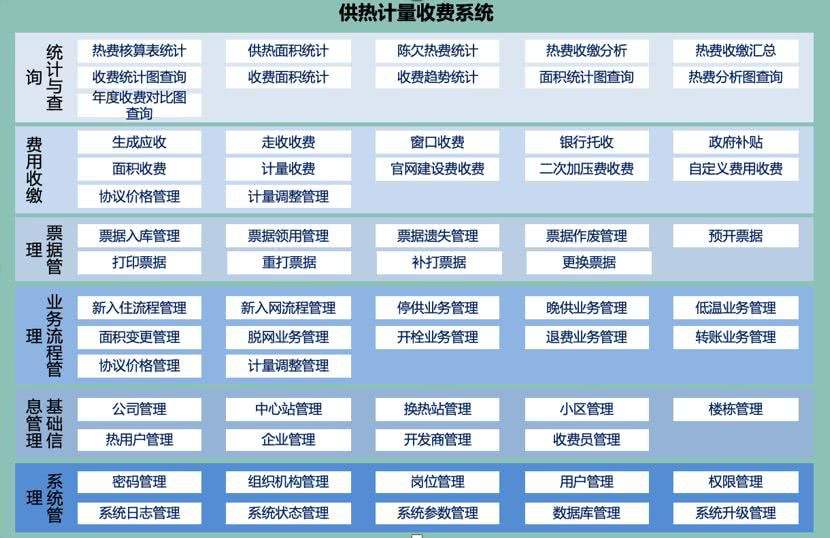The main reasons for losses of heating enterprises are as follows:
1、 With the expansion of asset scale, the depreciation expense increases rapidly. After the feast, tears flow down my face
With the increasing demand for heat supply, especially the rapid development of the real estate industry in recent years, the transformation of shantytowns and old cities, and the increase in the access of new communities to the network, the investment in the pipeline network is on the rise, the heating radius is expanding, and the pipeline network mileage continues to extend. The scale of thermal power station, pressure isolation station, relay pump station and other assets related to pipe network assets continues to expand. With the continuous increase of central heating area, the heat source cost, management and maintenance costs have increased year by year, the asset liability ratio has risen rapidly, and the net assets have shrunk, causing some heating enterprises to be in a vicious circle of loss management.
According to Article 14 of the Accounting Standards for Business Enterprises No. 4 - Fixed Assets, "an enterprise shall accrue depreciation on all fixed assets".
When calculating and withdrawing depreciation, heating enterprises shall withdraw all the fixed assets formed by government financial funds and the fixed assets formed by self raised funds of enterprises. The depreciation expense withdrawn is huge, accounting for a large proportion of the total expense, reducing most of the operating profits of the heating enterprises, and is an important factor in the increase of book losses.
2、 Disasters of hot enterprises: upside down of revenue and cost
The current heating price pricing mechanism in China determines that the heating price borne by users is set by the government, and the government departments must take into account the affordability of users when pricing. Therefore, to a certain extent, the heating price is made with the nature of public welfare. In some regions, the heat cost of residents has not been fixed for decades. However, for the operation of heat supply enterprises, the operating costs such as personnel wages, coal prices, primary heat prices, equipment purchase and maintenance are also market prices. As the tide rises, enterprises can only digest them, while enterprises cannot enjoy the preferential treatment of public welfare industries in terms of water and electricity. Therefore, from the policy perspective, heat supply enterprises are difficult to make profits.
In addition, the cost of heating is also increasing year by year. In particular, the country has closed and eliminated some small coal mines based on the requirements of environmental protection and safety production management. The rise in coal prices in recent years has made some heating enterprises lose money all the time. In addition, the requirements for environmental protection emissions of heat sources have been improved, and the related input costs of heating enterprises have also been increased.
However, due to the limitation of charging conditions, the degree of user cooperation, the high proportion of users reporting for shutdown, and the poor heating effect (the front end users are overheated, and the end users are not hot), some heating enterprises have low charging rates and cannot fully recover the heat charges. This makes the heating cost per unit area greater than the heating fee income per unit area. The more heat is supplied, the greater the loss.
3、 The financing scale expanded and the interest expense increased

Heat supply enterprises should not only implement pipe network construction, but also ensure the normal operation of heat supply. On the other hand, some central heating enterprises owe a huge amount of heat purchase fees for heat sources, which seriously affects the normal operation of heat source enterprises. The capital turnover is difficult, and some heat supply enterprises are struggling to operate, even facing huge risks such as assets freezing and enterprise shutdown.
For this reason, the heat supply company can only borrow money to repay the old. In addition to part of the funds raised by the enterprise itself, the heating pipe network is mainly financed by financial investment and bank loans. High interest expense often occurs, which is also one of the factors that cause losses of enterprises. It is not a long-term solution to use existing fixed assets for mortgage loans. Heat supply enterprises should improve their awareness of risk prevention, strengthen debt risk management, address the root causes of high production and operation costs, and avoid losing self-development ability. They must rely on non market factors, namely government subsidies or bank loans to maintain their survival and become zombie enterprises.
4、 Deliberate medical treatment in case of illness, adopt EMC mode to overdraw the future of hot enterprises
Faced with the above problems and the financial pressure of heating enterprises, some heating companies began to try to reduce various energy consumption indicators through energy contract management, hoping to achieve a healthy and healthy development of enterprises.
Energy Performance Contracting (EPC for short, EMC for short in China) is an energy-saving investment method that pays the full cost of energy-saving projects by saving energy costs; This energy-saving investment mode allows users to use future energy-saving benefits to upgrade enterprises and equipment, reduce current production and operation costs, and improve energy utilization efficiency.
However, after many years of implementation, the effect of this mode is not ideal, and even has changed. This is mainly because the following two drawbacks exist in the current domestic heating industry, which generally adopts the energy contract management mode:
1. The sharing period of energy-saving benefits is too long, ranging from five years in the short term to ten years and eight years in the long term
2. During the contract period, the user's income is low and the energy-saving service provider's share proportion is too high (all or more than 60% of the energy-saving benefits)
The energy-saving benefit sharing period of truly effective, scientific and reasonable energy management contract should be within 2 to 3 heating periods. Otherwise, if this period is exceeded, either its energy-saving method is wrong, or it just wants to sell more equipment to tie down the heating enterprise.
Originally, this way of learning from developed countries in Europe and the United States was very suitable for heating enterprises with high energy consumption and difficult capital turnover. However, after being transformed and repackaged by some heating energy saving service providers, the brand of "smart heating" became another new way to dump products and equipment from businesses in disguised form.
The existing schemes of energy-saving service providers are mostly to provide complete sets of heat exchange units, automatic control equipment, software system platforms, valves and control equipment, adopt the operation mode of high transformation cost investment, high financial cost and low energy-saving benefits, and at the cost of sacrificing user comfort. It is not through the innovation of heating process and method that small cost investment is really used to save energy and reduce consumption for heating enterprises and improve user satisfaction.
The energy saving diagnosis service provided by the company is mostly aimed at applying the same complicated, general and broad scheme template and promoting its products, equipment and software, rather than detailed solutions detailed to different regions and analyzed for each key node of different heat exchange stations.
After the products and equipment of the merchants are so packaged, it seems that the heating enterprises do not need to invest in the early stage, but the actual comprehensive cost is several times higher than the equipment sold by the merchants alone. The profit in the energy-saving benefit sharing period of 5 to 10 years is very considerable. These extra huge investments require heating enterprises to pay the bill by overdrawing their future profits, which prolongs and wastes the precious time for heating enterprises to turn losses into profits, which is equivalent to drinking dove to quench thirst.
However, this is not fatal. What's more, most of the time, these businesses are just selling old wine in new bottles. What they are dumping is the elimination of outdated products and equipment using various gimmicks and the current hot fancy concept packaging. After years of actual operation, they will find that their energy saving effect is very small, and some of them are also mixed with warm winter factors and the additional benefits of relying on the weather. Heat supply enterprises are completely reduced to the destination of helping these businesses to digest excess capacity. The result is of course that the businesses make a lot of money. However, this subsequent sale has become the last straw to crush the heat supply enterprises.
Under the condition of poor operation, heating enterprises continue to invest a lot of money in equipment and hardware, and try to solve existing problems by increasing investment, which will only delay the exposure of various problems and make the problems snowball, but will not fundamentally solve them.
So a lot of manpower, material resources and time costs have been invested, and future profits have been overdrawn. However, various energy consumption indicators are still high, or they continue to lose money year after year. When they can turn losses into profits is an extravagant hope, let alone when they can recover their investment, and then they end up with nothing.
In the face of the above complex factors, heating enterprises should not invest huge amounts of money to save energy and reduce consumption by purchasing, installing and replacing a large number of hardware equipment and facilities. After all, "there is not much time left for loss making hot enterprises", which will only make things worse. Repeated "trial and error" is still feasible for enterprises with sufficient funds, but for a thermal power company with hard to return and poor cash flow, it is the right way to obtain large profits through less reasonable investment and effective in a short time.





